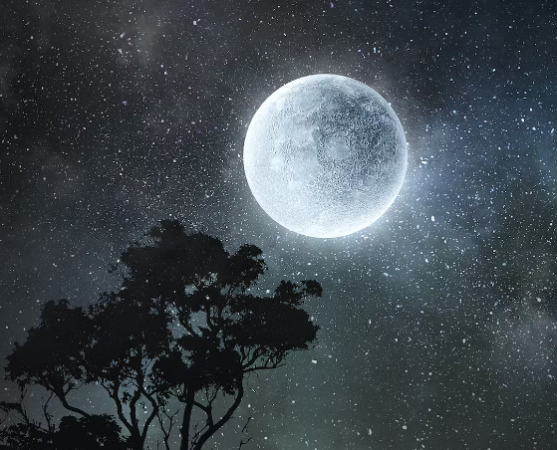
USA: A revival in lunar exploration is taking place. By the end of this decade, dozens of missions coordinated by various space agencies—and increasingly by private companies—are planned to travel to the Moon. The majority of these will use modest robotic spacecraft, but NASA's ambitious Artemis programme seeks to send people back to the moon by the middle of the next decade.
The search for lunar resources, such as the water-ice at the lunar poles, which can be extracted and used to make hydrogen and oxygen propellant for rockets, as well as geopolitical posturing, are some of the causes of all this activity. But science will also undoubtedly reap significant benefits.
We still have a lot to learn about the history and development of the solar system from the Moon. It is also useful for observational astronomy from a scientific standpoint.
Also Read: ISRO successfully took off the Polar Satellite Launch Vehicle C55 (PSLV-C55) task
At a Royal Society meeting earlier this year, the potential value of studying the natural satellite of Earth was discussed. The increased access to the lunar surface that was now anticipated served as one of the catalysts for the meeting.
Different branches of astronomy would profit. The most prominent is radio astronomy, which can be carried out from the far side of the Moon, which is always facing away from Earth.
The radio signals produced by people on Earth are always blocked from reaching the far side of the moon. Additionally, it is shielded from the Sun during the lunar night. Due to the fact that no other planet or moon has a side that is permanently turned away from Earth, it is arguably the most "radio-quiet" location in the entire solar system as a result of these features. Therefore, radio astronomy is the perfect application for it.
Infrared, ultraviolet, and visible light waves are a few examples of electromagnetic energy, as are radio waves. They are distinguished by having various electromagnetic spectrum wavelengths.
Also Read: Mark Zuckerberg has announced that Owners of disappearing messages will now be able to keep them
The ionoshere of Earth blocks radio waves with wavelengths longer than approximately 15 m. However, the Moon's surface is unhindered by radio waves of these wavelengths. This last unexplored portion of the electromagnetic spectrum is best studied from the far side of the moon in terms of astronomy.
The term "low frequency radio astronomy" refers to studies of the cosmos at these wavelengths. The structure of the early universe, in particular the cosmic "dark ages" - the period before the first galaxies formed - can only be studied using these wavelengths.
Except for the enigmatic dark matter, the majority of the universe's matter at that time existed as neutral hydrogen atoms. These have radiation with a typical wavelength of 21 cm, which they both emit and absorb. Since the 1950s, radio astronomers have used this characteristic to study hydrogen clouds in the Milky Way, our own galaxy.
The 21 cm signal produced by hydrogen in the early universe has been shifted to much longer wavelengths due to the universe's continuous expansion. Because of this, hydrogen from the "dark ages" of the universe will appear to us with wavelengths longer than 10 m. We might be able to study this only on the far side of the moon.
At a recent Royal Society meeting, astronomer Jack Burns gave an excellent overview of the relevant scientific literature. He described the far side of the moon as a "pristine, quiet platform to conduct low radio frequency observations of the early Universe's Dark Ages, as well as space weather and magnetospheres associated with habitable exoplanets."
As stated by Burns, searching for radio waves from charged particles trapped in the magnetospheres of planets orbiting other stars is another potential use for far side radio astronomy.
Also Read: Google is dissatisfied with how it is lagging behind OpenAI and Microsoft in the AI race
This would make it easier to determine whether or not these exoplanets could support life. Exoplanet magnetosphere radio waves would likely have wavelengths greater than 100 metres, necessitating a radio-quiet environment in space. The best location will once more be on the far side of the Moon.
The pursuit of alien intelligence can be justified on similar grounds as efforts to detect their signals. Additionally, by allowing access to a previously uncharted region of the radio spectrum, it is possible to make accidental discoveries of novel phenomena.
When NASA's LuSEE-Night mission touches down on the far side of the moon in 2025 or 2026, we should get an idea of the potential of these observations.